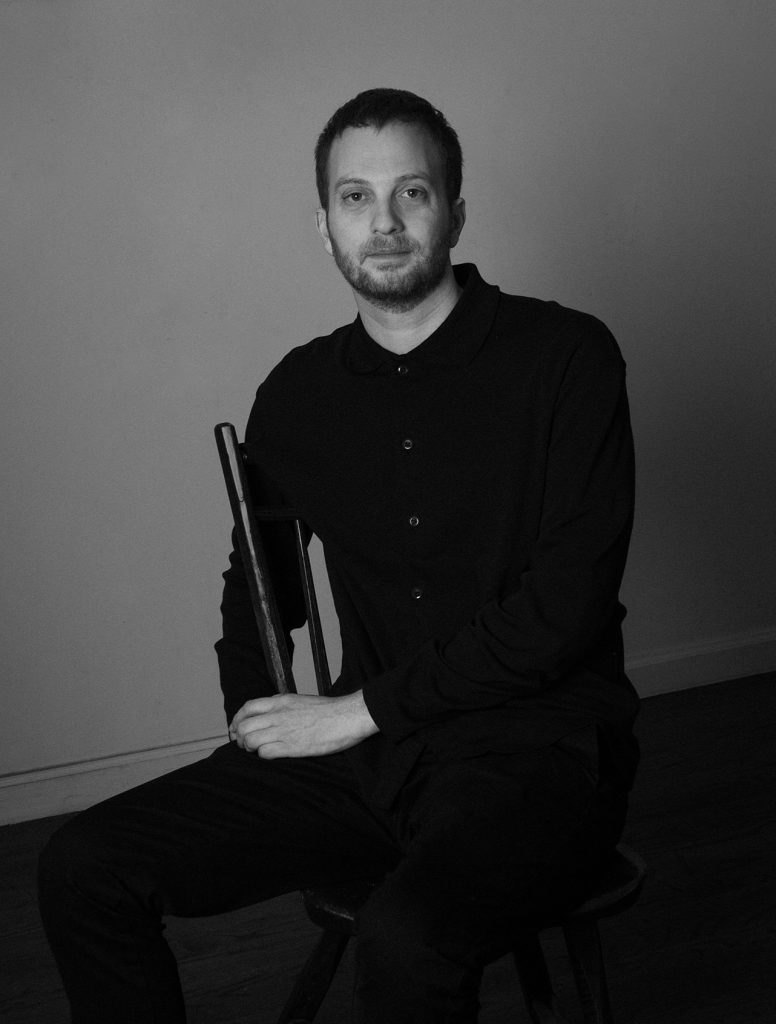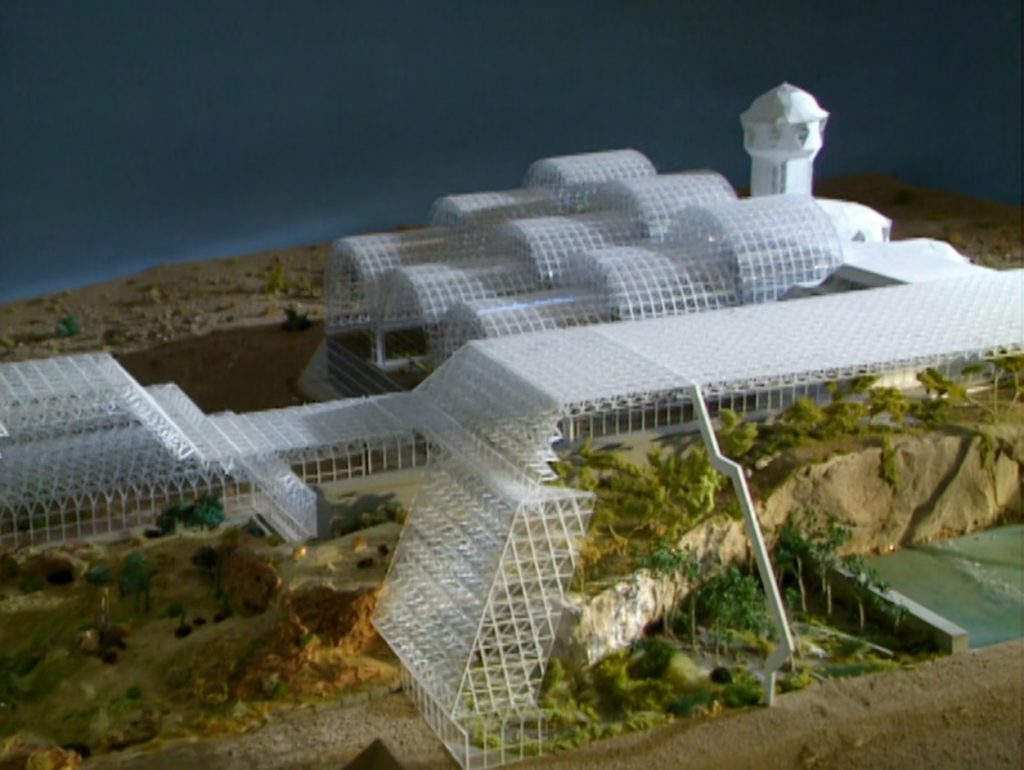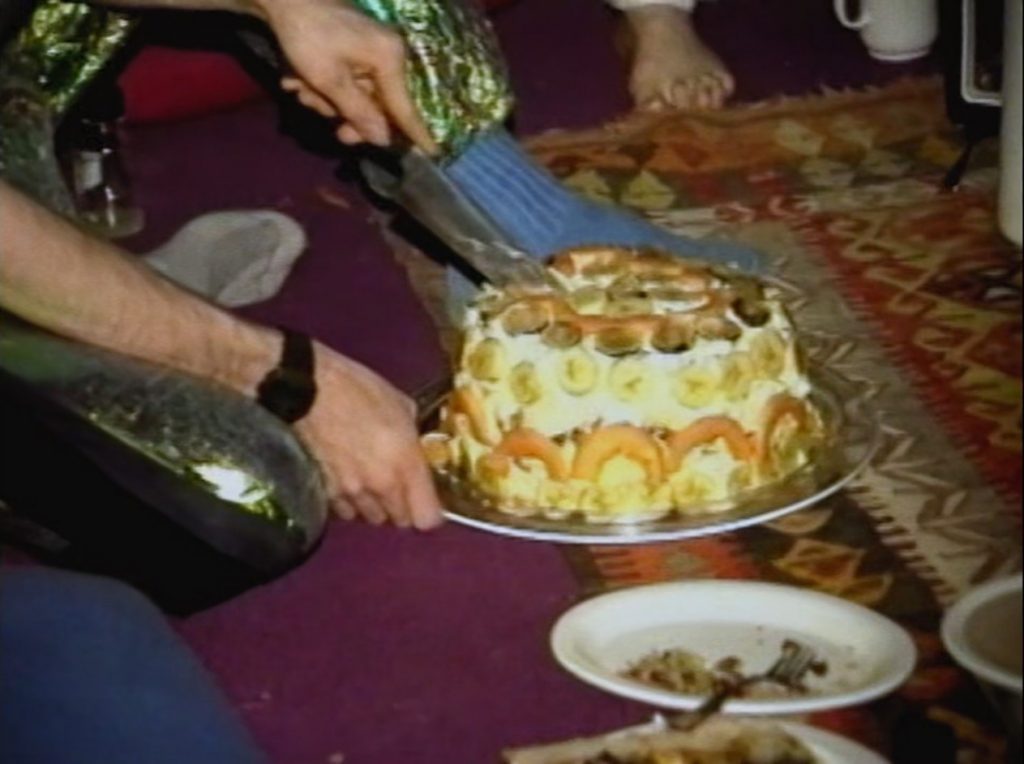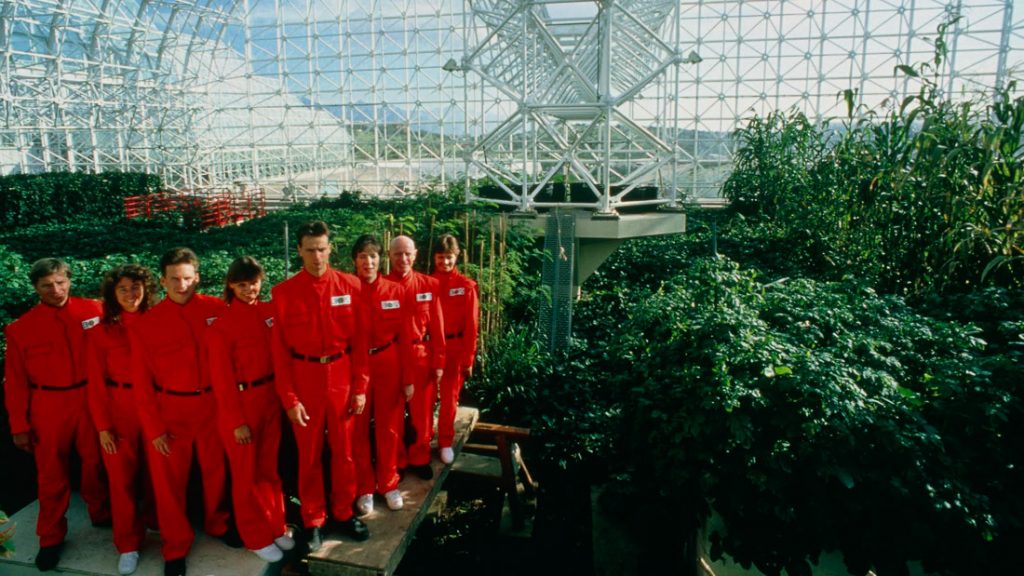Many of us first learned of John Allen and the “Synergists” in the 1960’s following their coming together in San Francisco to form the “Theater of All Possibilities. Always curious, wondering, experimenting, seeking, when San Francisco started turning from a free-spirited, free-thinking haven, Allen and his group moved to New Mexico where they founded the Synergia Ranch. Wanting and believing that they could be self-sustaining, one of the many endeavors and “experiments” that the group undertook was Biosphere 2. Another adventure involved the building of the Heraclitus. An ocean-worthy vessel, the group sailed around the world in Heraclitus, forming a multitude of companies (many still around today) from which they generated income which allowed them to continue with their idealistic pursuits. Through it all, each member looked to John Allen for leadership and guidance.

But the crowning “achievement” of the group was Biosphere 2 and thanks to a partnership with billionaire Ed Bass, it became a global media phenomenon as eight of the Synergia visionaries, now called “Biospherians”, spent two years self-quarantined inside this completely self-sustaining ecosystem. Was it a success? Yes. Was it a failure? Yes. But it also served as hope and a cautionary tale for the world, never more apparent than now during life in the time of Covid-19.
Intrigued and amazed at the complete history of Allen and the group, documentarian MATT WOLF undertook the Herculean task of telling their story and the story of Biosphere 2 with SPACESHIP EARTH. Thanks to copious archival materials safely stored at Synergia Ranch over the decades, and a willingness of the Biosphere 2 inhabitants to tell their individual stories, Wolf has crafted a fascinating story about the human spirit, collaboration and cooperation when working towards a common goal, the catastrophic results when personal conflicts and corporate interests and greed are injected into a situation, all the while focusing on the wonder and joy of hope and inspiration in bettering our world. The result is dynamic, fascinating, educational, and entertaining. And not to spoil anything for anyone, but once corporate interests and politicians get involved in the Biosphere 2 project, don’t be surprised at who and what may have been involved; after all, isn’t it long said that history always repeats itself?
I spoke at length with MATT WOLF about the making of SPACESHIP EARTH. His excitement and passion were palpable during our exclusive conversation, as was his own keen and focused mindset in bringing the documentary to life.

Job well done on this documentary, Matt! I am so thrilled to see this story come full fruition and to actually see the components that really comprised what we saw for those of us who were alive and old enough to see it back in the ’90s when it was all happening. Job well done. This was truly some endeavor you undertook putting together SPACESHIP EARTH. I remember when the whole thing happened. I remember the news coverage long before Biosphere 2 ever happened going back to when they had made their ship. There was very small news coverage as they were sailing around the world in their “ship”, the Heraclitus.
You saw coverage of that? Wow. You are the only person I’ve ever talked to who’s seen that because they were pretty under the radar.

I like to look for tiny strange news stories. Always have. And Heraclitus was certainly that. The entire scope of this story with Biosphere 2 and the history of John Allen and the Synergists, is a very untraditional story, Matt. And with a subject like this, you can’t be a traditional filmmaker or somebody who rattles it off the top of their head, “Oh, I think I’ll make a film about this.” You really have to understand and be motivated because when this blew up in 1991 with the actual Biosphere taking place, it was a three-ring circus with global coverage on everything from morning till night. There was the build-up and then when it happened deep into the project when things started to denigrate and it came to light Biosphere 2 was not exactly what it was purported to be. There was a lot of foreshadowing of what was to come if people paid attention and knowing the whole story, I was more fascinated with Ed Bass. He’s a story unto himself.
Yeah. I left the film thinking of him as a real benevolent benefactor. I t’s so rare that people can find the kind of patron or supporter who is willing to think long-term like that and willing to take that level of risk to pursue an idea that hasn’t been done before. In a lot of ways, this model of private enterprise for science and technology, there wasn’t a real precedent for it back then whereas now, with the dot-com culture, it’s “a thing.” In so many ways, I think Ed’s belief in the possibilities and the futurism of this project was really ahead of its time, but, of course, there are limits to futurism because of its economic sustainability and that relationship dissolved. I thought of him as a visionary guy himself and his support – he’s recently donated more money to Biosphere 2 – so he has this long-term engagement with the project.
It gets the mind thinking. If you look at what happened with the court orders and changing of the guards, so to speak, that Bass went and saw it, it’s almost like, was there a God complex battle there between John Allen and Ed Bass?
I don’t think so. I think the project was hemorrhaging money and the media had gone into a full-on take-down mode. There was just a lot of pressure to reign the project in. It was not going well and they had this enormous facility that had cost $200 million. I think he was in a bind. There were limits to his generosity and his investment in the project. They wanted it to become a more conventional thing that could be monetized and profited in the short-term instead of this ultra long-term vision.

What was it that said to you, “I have to investigate this?” I’ve heard soundbites where you’ve said you saw one of the promo pictures of them in their cute little red, designer, Star Trek jumpsuits, but it has to go beyond that for someone like you to invest your time and your soul into a project like this, especially when you dig into it this deeply. With all of the coverage out there and then all of the footage that these people documented going back into the ’60s, you must’ve had close to 1000 hours of footage to go through.
Well, we had 600 hours. I think, for me, when I pursue a project, I gravitate towards “hidden histories”, is what I call them. Stories that have flown under the radar or things that… like Biosphere 2 or huge popular phenomenon that have faded from collective memory. I’m interested in reappraising those types of stories. Then I make films that have a lot of archival footage. I was struck by the imagery, of course, and the science fiction quality of this story, but when I met the synergists and went to their ranch and discovered that they had this monumental archive and that they had recognized the historical significance of what they had done and held on to all of this footage, it was the perfect storm for me in terms of what I like to do; to look at themes that are huge, big-world consequences through the prism of very idiosyncratic and specific stories. This is a film that grapples with literally re-imagining a world and the imprint we might make on the world. In a lot of ways, it’s about human achievement; what people can accomplish when they put their minds together toward a common goal. At the same time, it’s about an incredibly specific project at a specific time in the world. This totally idiosyncratic group who is a real spin on the archetype of hippies. I’m really interested in thinking about how hippie culture evolved into dot-com culture, too, and this is in that wheelhouse. It was all these things I was interested in, but I felt like there was an opportunity to take something from the past and make it new, to reappraise a story that was discarded as a hoax or as a failure and to find meaning in what these people had pursued, particularly in our world today, where it’s becoming more and more unsustainable for us to live how we have; particularly now, in light of coronavirus pandemic. Something’s got to give.

It was a great study in microcosm, in psychological behaviors too. I always found that aspect of it fascinating. To now see the hidden stories with the interviews, 2020 hindsight, going backwards from the participants, from the Biosphereans, I find this exceptionally striking in the documentary.
I think there was an expectation that it would be more big brother and less about collaboration. My impression watching the material and getting acquainted with the story is that they just had so much work to do. They were so busy. While they endured a kind of psychological intensity by being quarantined in close quarters, they had no choice but to manage their differences in order to make their world thrive or the entire project would implode. It was really a crisis of leadership that created a division within the group because it was this typical astronaut-mission-control dynamic where some of the people, particularly the Biosphereans who went back to the Synergia Ranch days, felt like leadership is what coheres a small group. “We need to follow the guidance from mission control.” There were others who saw things not going right, felt like there was a lack of transparency and wanted to go rogue and to be stewards of their world as they saw fit. I think that created interpersonal division. That was an issue of management, both externally and internally. From their point of view, what it is planetary management? What does that look like? It’s really complicated. Nobody’s going to agree on that. I think it also shows the human resistance to consensus and that, nonetheless, if we can’t agree on things, we can still come together and cooperatively coalesce our skills to secure our survival. I think that is an inspiring aspect of it is that despite these differences in how they might’ve managed the project or how they perceived the leadership, that they still came together and they still finished their mission. They could’ve left, but nobody wanted to leave. They were so dedicated to seeing through this experiment that they had embarked on.

Well, let me ask you, from a filmmaking standpoint, about you and your editor, David Teague. I love David’s work. I’ve been a fan of his for quite a while. How do the two of you sit down and start to come up with a through-line for this, because you’ve got 50 years of material to go through. You have archival material that belongs to the Biosphereans, that came from the ranch. You have stuff in the public domain, you have news footage, you have commercials, advertisements. How do you develop this? Where did the two of you start with a through-line to come up with a cogent and synergistic approach to this?
David’s so good. This is really unique to me and my process, but, specifically, was very much part of how I worked with David. I talk about things that aren’t the story in the edit room. I talk about my life as life. We talk about ideas that interest us, other people. The discussion of our lives melts into the discussion of the characters. It’s part of how I find myself in the material. I know that sounds odd. I don’t make films about my life. I never would make a film with a first-person voiceover, but there’s a process in which I find myself in the material. I really felt with David we were finding ourselves in this material. Yeah, there’s the whole problem-solving process of constructing a story and structuring it in such a way that it’s coherent and entertaining, but I think in terms of big ideas and through lines, we found ourselves in the material and things that are important to us. We saw things that helped us understand why we were gravitating to the material, why we were passionate about this story and why other people might care. I think, for me, when I’m making a film, if I’m feeling emotionally involved in a story, I have confidence other people will too. But if I’m not, I want to investigate what is preventing me from connecting to these people emotionally and, if I am, why? The Heraclitus ship launching, I would cry every time I saw that scene. I saw it probably hundreds of times and every time I watched the rough cut I would cry. In a sense, I’m allowing myself to be available to that experience. Why is it that I’m so moved by that? I’m so moved by it because, again, it taps into this idea of human achievement and what people can accomplish if they put their minds together toward a common goal. That’s such an unexpected manifestation of that. By analyzing my own response to the material and other experiences that I’ve had in my life, it helps me tap into the bigger idea. It’s so amazing to be in a quarantined-collaboration with an editor, having that back-and-forth to discuss these things beyond just the mechanics of constructing a film.

How many years of editing did this take to do, Matt?
Honestly, it was quick. It was a year and a half of filmmaking from start to finish. It came together so quickly. We had our own cohesive, small group that synergized around the project. It mirrored the synergists, in a way, and the Biosphereans.
Talk to me about bringing in Owen Pallette for the score. The score is positively gorgeous. You’ve got some very beautiful key moments at about the 20-minute mark. Once Heraclitus sets out and is sailing, you’ve got a great sound mix going there with waves. Then Owen’s scoring, there’s a flow, there are strings and it goes into harps or flutes. It’s just beautiful. At your hour mark, you’ve got a montage of the launch hoopla for the Biosphere 2. The music just soars, but it’s light, it’s hopeful and that’s very key to the sonic experience of this documentary. I’m curious about your conversations with Owen that allowed him to develop the score that he did.
Thank you. Owen is a solo artist and a film composer who also does orchestration for other musical artists. He’s very virtuosic. We had collaborated on my previous film Recorder: The Marion Stokes Project and that was a very synth-oriented score. Going into this project, he said he really wanted to make a big orchestral score and to lean into organic instrumentation and strings whenever it felt fit, even though there is also a si-fi-synth for the score too. I think, from my point of view, I wanted the film to be an epic. It’s a lot of handmade, 16-millimeter stuff and low-fi Betacam footage. I love the idea of scoring that to a huge orchestral score. It’s very unexpected. It’s not what you normally see. One of my favorite pieces of music in the film is when the Biosphere 2 is being built and you see all the beams and glass panes going up and there’s this enormous, epic moment from the score. I remember a video Owen sent me of the Macedonia orchestra recording and tracking that cue. It just, to me, was so amazing to see such a huge musical moment combined with this low-fi footage. I think it elevates the film in a special way.

I completely agree with you. A question for you about the present-day interviews when people got to voice their reflections on the experience and life going back to the beginning. I love how with the interviews your backdrop… So often when we have talking heads or interview subjects in a film, as I’m sure you’ve seen, backgrounds are always different. It’s somebody’s office, it’s something this, it’s a backdrop here, a backdrop there. But you have a very uniform cohesiveness to the backdrops behind each one of your subjects in present-day interviews. I love the underlying metaphor of that that goes to the cohesiveness and the uniformity of them living within the Biosphere and living within the group. I’m curious as to your thoughts on going that route rather than, “Okay, this one’s in this house, this one’s in that house,” and have it be a hodgepodge.
Basically, as it says it in the film about explaining synergy and the geodesic dome and that the stress of the ball have their individual strengths, that the cohesion of them is what’s powerful. To me, the story’s interesting, but what’s profound about it is when all these different perspectives, this real network of individuals who were involved in this epic story come together with all their different perspectives. I wanted to capture that, not through the eclectic settings that they’re from, but in this unified space. I was inspired by geodesics and the geodesic dome, so we built this erector set of geodesics. We constructed that in studios in different places where we filmed interviews to connect everyone in this network of relationships that all coalesce into this big project.
I love that look of it. It also serves twofold because it doesn’t detract from what they’re saying. You don’t have the clutter.
Yeah, it’s simple. I’m really happy that you noticed that and appreciate it, because, in a way, I don’t want people to think about it, but I also want it to give the film a sense of design. So much of what they did was very design oriented. All these ’90s aesthetics too. It’s really cool. I just wanted to create a subtle design experience that felt like a network instead of just all these disparate individuals.
It plays very well into the whole history of John Allen’s vision and the whole group going back to the artier time of creativity in the 1960s, in the hippie era. I love what you did.

Now that you have finished your own cinematic biosphere, shall we say, what did you learn about yourself and, more particularly, yourself as a filmmaker and a storyteller that you will take forward into future endeavors and projects?
I think, as a human, I took on a different level of feeling accountable. I feel a different level of accountability inspired largely by the Biospherean Linda Lay. She still lives in Oracle, Arizona. She does really modest projects like the community garden. Oracle is the place where Biosphere 2 is. Right now, she’s doing mutual aid and bringing in vegetables to the people in Oracle. She operates on a really, really small scale. I love the shot of her where she comes out of the miniature greenhouse at the end. This tiny Biosphere. We had plastic bottles on set during the interview and I offered her one and she said, “I don’t want to hold that. It sends the wrong message.” It made me think just about my own accountability and responsibility. I think that is my personal takeaway as a human. As I realized that the main theme of the film is about small groups as a model for change, I think I just came to appreciate the dynamics of a true collaboration amongst a crew. Not just while shooting, but a whole team and how everybody has different strengths, different experiences, and different perspectives, and when they really come together, in a good way, you can push things so much further. You can go well beyond what you think is possible. That’s so true of people in the story. I just had a really good collaborative experience with our entire team, especially with the producer Stacey Reiss and our editor David Teague. We also had an amazing team of our archivists, story producers, associate editors, line producers, and a whole team. It was tight, it was not a big group, but we all came together and it really, I think, paid off in terms of the strength of our collaboration.
Are you ready to go live in a biosphere?
No, I’m not ready to live in a biosphere. I’m trapped at home. I can’t wait to go outside.
by debbie elias, exclusive interview 04/28/2020











